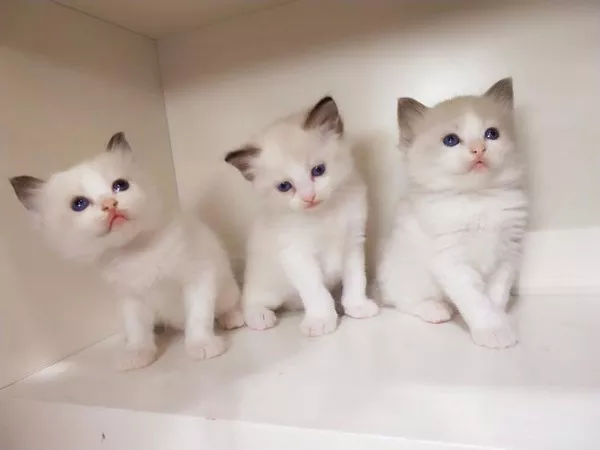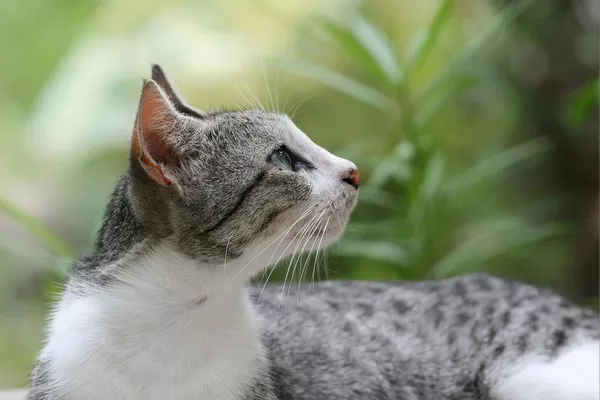Ragdoll kittens are known for their charming personalities, striking blue eyes, and silky fur. As these adorable felines grow and develop, it’s natural for owners to wonder about their weight and nutritional needs. In this comprehensive guide, we’ll explore how much a 4-month-old Ragdoll kitten should weigh and provide feeding tips to support their healthy growth and development.
Understanding Ragdoll Kitten Growth: A Developmental Journey
Before delving into weight specifics, it’s essential to understand the typical growth trajectory of Ragdoll kittens. Like all young cats, Ragdoll kittens experience rapid growth and development during their first few months of life. From birth to adulthood, kittens undergo significant changes in size, weight, and physical abilities as they transition from nursing to solid food and begin exploring their surroundings.
At four months of age, Ragdoll kittens are considered to be in the early stages of adolescence. During this period, they continue to grow and develop, albeit at a slower pace than their younger counterparts. Four-month-old Ragdoll kittens are typically more active, playful, and curious, displaying increased coordination and agility as they explore their environment and interact with their owners.
Ideal Weight for a 4-Month-Old Ragdoll Kitten: What to Expect
The ideal weight of a 4-month-old Ragdoll kitten can vary depending on factors such as genetics, diet, and individual growth rate. However, as a general guideline, most healthy Ragdoll kittens should weigh between 5 to 7 pounds (2.3 to 3.2 kilograms) by the time they reach four months of age. Keep in mind that these are approximate values, and slight variations may occur based on individual factors.
It’s essential to monitor your Ragdoll kitten’s weight regularly and consult with your veterinarian if you have any concerns about their growth and development. Your veterinarian can provide personalized guidance based on your kitten’s specific needs and help ensure they are meeting their nutritional requirements for optimal health and well-being.
Feeding Tips for a Healthy Ragdoll Kitten
Proper nutrition is vital for supporting the growth and development of your Ragdoll kitten. Here are some feeding tips to help ensure they receive the nutrients they need during this critical stage of life:
Choose High-Quality Kitten Food: Opt for high-quality kitten food specifically formulated to meet the nutritional needs of growing cats. Look for options that are labeled as complete and balanced, containing essential nutrients such as protein, fat, vitamins, and minerals. Avoid feeding your kitten adult cat food, as it may not provide the appropriate levels of nutrients required for growth.
Follow Feeding Guidelines: Feed your Ragdoll kitten according to the recommended feeding guidelines provided by the manufacturer based on their age, weight, and activity level. Divide their daily food allowance into several small meals throughout the day to support healthy digestion and prevent overeating. Be sure to adjust portion sizes as needed based on your kitten’s growth and appetite.
Provide Fresh Water: Always provide access to fresh, clean water to keep your Ragdoll kitten hydrated and healthy. Change their water bowl regularly to ensure it remains clean and free of contaminants. Consider using a shallow water dish to make it easier for your kitten to drink, especially if they have a short muzzle.
Monitor Body Condition: Monitor your Ragdoll kitten’s body condition regularly to ensure they are maintaining a healthy weight. You should be able to feel their ribs with gentle pressure but not see them prominently. If you notice rapid weight gain or loss, consult with your veterinarian to rule out any underlying health issues.
Avoid Overfeeding and Treats: Resist the temptation to overfeed your Ragdoll kitten or offer excessive treats, as this can lead to weight gain and nutritional imbalances. Stick to the recommended feeding guidelines and limit treats to occasional rewards for good behavior. Choose healthy, kitten-friendly treats made with quality ingredients and avoid those high in sugar, fat, or artificial additives.
Gradual Transition to Adult Food: As your Ragdoll kitten approaches six months of age, you can begin transitioning them to adult cat food gradually. Mix a small amount of adult food with their kitten food and gradually increase the proportion over the course of several days to a week. Monitor your kitten’s response to the transition and adjust as needed based on their appetite and digestive tolerance.
Conclusion: Nurturing Your Ragdoll Kitten’s Growth
As you embark on the journey of raising a Ragdoll kitten, it’s essential to prioritize their health and well-being by providing them with proper nutrition and care. By monitoring their weight, following feeding guidelines, and offering a balanced diet, you can support their healthy growth and development during the critical early months of life. Remember to consult with your veterinarian for personalized advice and guidance tailored to your Ragdoll kitten’s individual needs. With patience, love, and proper nutrition, you can ensure your Ragdoll kitten thrives and blossoms into a happy, healthy adult cat.

























